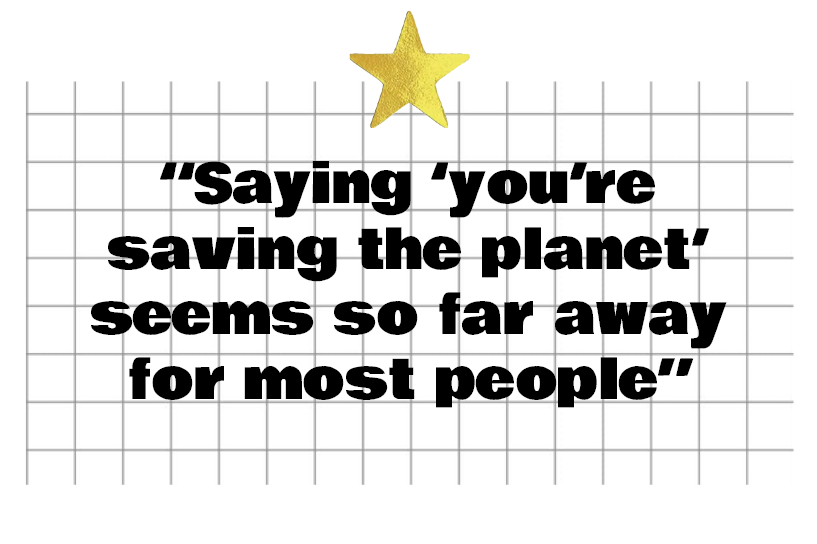Ever put on an item of clothing and felt better? Clothes can have an instant effect on our mood. For an extreme example, look no further than the transgender person finally dressing in accordance with how they feel inside. But even everyday dressing-up has the power to make us feel important, included and interesting – or the opposite.
So it was a little surprising to discover the discipline of fashion psychology is comparatively new. It’s only over the past decade that psychologists have started in earnest to apply the scientific study of human behaviour to what we wear.
Dr Carolyn Mair, a behavioural psychologist, was one of the first to explore and define the subject. A chance invitation to speak at London College of Fashion following her PhD in cognitive neuroscience led to her founding the world’s first university courses in the subject. She’s also published a book, The Psychology of Fashion. But what does a fashion psychologist do, exactly? After leaving academia, Dr Mair became a consultant to some of the world’s biggest clothing brands, helping them understand customers’ needs and build trust.
She said the main thing people get wrong about her job is thinking she’s a stylist. “Stylists and image consultants do an amazing job at helping people feel better about themselves, but that isn’t what I do. My work is about understanding human behaviour: how do we change behaviour in order to get better performance or better outcomes for the individual and for the world.”
Increasingly, fashion brands are recognising that those better outcomes must include ethics and sustainability, she said. In fact, it’s always been a dream of hers to improve the industry.
Because if fashion can use psychology to keep us shopping new, anxious over the latest trends – surely it can help us find new ways of relating to our clothes, too. Dr Mair explained some of the ways she uses psychology to dress more sustainably.
1. You don’t have to spend more
The concept of sustainable fashion isn’t new. But Dr Mair believes the reason it hasn’t had the impact it should is because it has been too exclusive for too long: “The things the sustainability agenda was pushing previously were very expensive items, which very, very few people can actually afford… This excludes the huge majority of the world’s shoppers.
“We’ve been talking about how we need to spend more and buy less – and of course, we do need to buy less – but not everybody can afford to spend more.”
We need to buy less – but not everybody can afford to spend more
‘Slow’ fashion often isn’t any better: many items are made in exactly the same factories, with exactly the same conditions for workers, as mass-market brands: “The problems are more complex than lots of people appreciate.”
One trick to help you work out if your money is going to the right place is to look at “cost per wear”. Really thinking about how many times you will wear an item will help you work out if it’s worth the price. “I would think there would be lots fewer opportunities to wear a dress that costs £5000 than there is to wear a dress that costs £50,” said Dr Mair.
2. Find the novelty in what you already have
We tend to “habituate” to things, getting used to what we already have – and bored of it. This leads to something called the ‘hedonic treadmill’, where you constantly try to catch up with the latest trends but can never achieve happiness. “None of us need to buy anything else ever again,” Dr Mair said, explaining that we probably bought many things we own not because we needed them, but “because we were swept along by it, because we like novelty”.

To combat this, she advises to look first at what you already have in your wardrobe with a creative eye. “How could you combine your clothes differently? Could you put different tops with different bottoms? Put a top over a dress? Cut off the sleeves or tie a knot in a t-shirt? Being sustainable is really about engaging with what you’ve already got.”
3. Form an emotional bond with your clothes
Another way to fight the urge to constantly buy new is to learn to love what we have, even if it goes in or out of fashion. “When we feel good about an item of clothing, we create a certain kind of symbolic meaning around it… This denim shirt I’m wearing now, it’s really old, I really like it, I feel comfortable in it. But if I gave this denim shirt to you, it would not have the impact that it has on me… It’s much more about the individual than the item of clothing.”
Cultivating these relationships with clothes and developing our own personal style is key to this – and resisting the urge to buy what’s new in the shops every week. It’s important to really love what we purchase: “If we have something we don’t love, maybe we just have average feelings about, then we’ll get bored with it.”
4. Make it rewarding
“It’s fine to say ‘you’re saving the planet’. But for most people that seems so far away,” Dr Mair told me. On the other hand, buying a new dress can bring an instant high. So how can we make not buying fun? One trick is to put what you’re saving on new items aside for a thing or experience you really want.

“Instead of spending on a dress you’re not sure about, put it in a pot towards a holiday or something else more meaningful and enjoyable,” she suggests. “Customers are looking for experiences now more than material things… Not owning things but more about engaging with being with your loved ones.”
5. Remove guilt from the equation
There is no point in shaming people for buying ‘fast’ fashion – and that includes yourself. People are creatures of habit, something which fashion has exploited by making shopping streamlined and easy. As a result, “you can’t expect people to change in one step” says Mair. Change comes from “understanding people’s behaviours and habits, their lifestyles” and making adjustments from there.
Fast fashion is what clothes 99% of the population. And we have to deal with that
New items and lines can be very tempting, especially when you’re young. Mair says people are more likely to buy impulsively “when they’re finding their identity and playing around with it, they’re not so confident about what their style is or what they really feel good in”.
When people feel guilty or excluded because of their fashion choices, they “get defensive, so they make excuses around why they’re buying the so-called fast fashion,” Mair said. “But fast fashion is what clothes 99% of the population. And we have to deal with that.”
6. Put pressure on brands
None of this is to say brands should be let off the hook. But Dr Mair believes they will not change without consumer pressure: “Brands, however big or small, are commercial enterprises, and they need to make money and a profit. So… they are not going to tell customers not to buy anything.”
However, this is rapidly becoming a reality, she thinks: brands can no longer be “sloppy” with their sustainability credentials. “Because of social media, customers have a voice now.
“It’s not just the fashion industry… We need to look at this in a holistic way. And join forces with the industries we can’t do without. We can’t do without clothing. But we need to change how we produce things, and how we get rid of them as well.”
Next, read about the hidden but all-too-common psychological problem of compulsive shopping.


One reply on “Dr Carolyn Mair: the psychology of shopping better”
[…] more on how you can resist the trend cycle, read our interview with a fashion […]